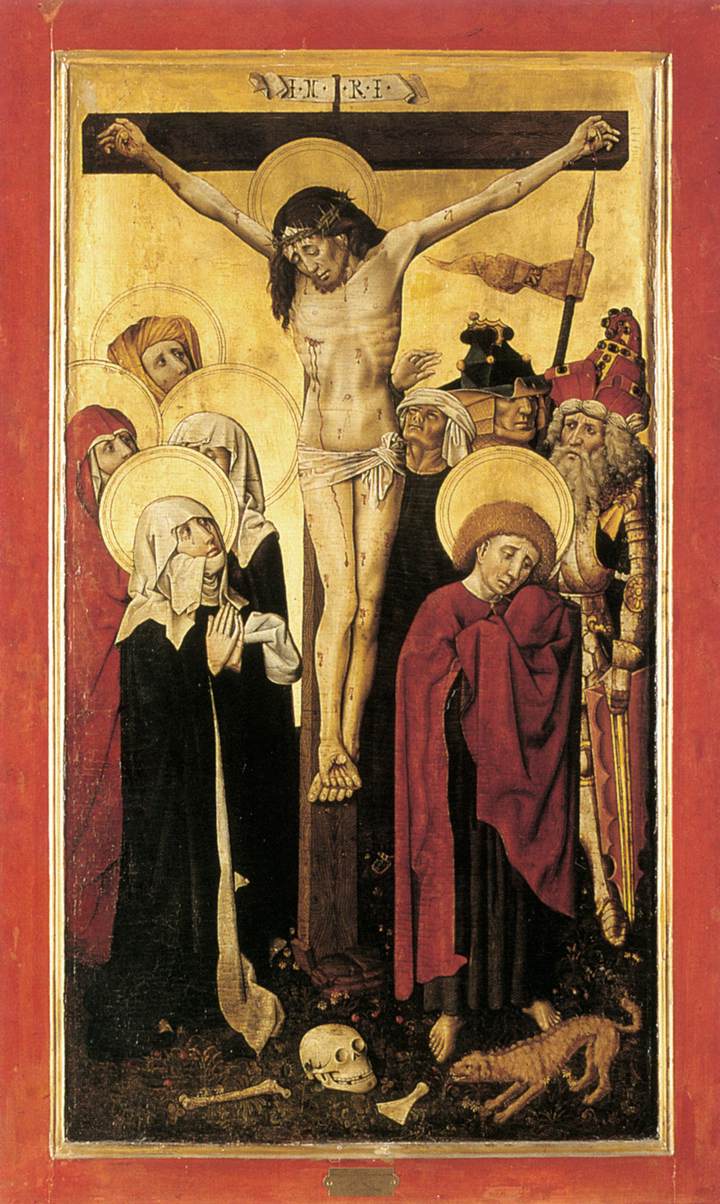Description
The painting Crucifixion by the German artist Unknown Master is a work that captivates with its unique artistic style and striking composition. With an original size of 142 x 78 cm, this piece is a true treasure of medieval art.
The artistic style of this painting clearly reflects the influence of the German Gothic tradition. The Unknown German Master uses a detailed and meticulous technique, characterized by precise lines and painstaking use of colours. Every detail of the composition is carefully crafted, from the folds of the clothing to the facial expressions of the characters.
The composition of the work is particularly interesting, as it manages to convey a sense of movement and drama. The main focus of the painting is the crucifixion of Jesus Christ, depicted in the center of the work. The German Unknown Master manages to capture the suffering and anguish of Christ through the position of his body and his face. Around him are other biblical characters, such as the Virgin Mary and Saint John, who express their pain and devotion.
Color plays a crucial role in the work, as it contributes to creating an intense and emotional atmosphere. Dark and gloomy tones predominate in the painting, reinforcing the feeling of sadness and sacrifice. However, touches of bright color can also be seen in certain details, such as the clothing of the secondary characters, which adds an interesting contrast and highlights the importance of the crucifixion.
The history of the Crucifixion painting is enigmatic, as the identity of the Master who created it is unknown. However, its artistic quality and emotional impact have made it one of the most recognized works of German medieval art. Although its origin and original purpose remain a mystery, this painting has endured through the centuries, captivating generations of viewers with its beauty and depth.
Despite its recognition, there are little-known aspects of this painting. Some experts suggest that it may have been created for a church or monastery, intended as a devotional piece for spiritual contemplation. Others speculate that it could have been part of a larger altarpiece, although no supporting evidence has been found. These unknowns only add an aura of mystery and fascination to the Crucifixion painting by the German Unknown Master.

